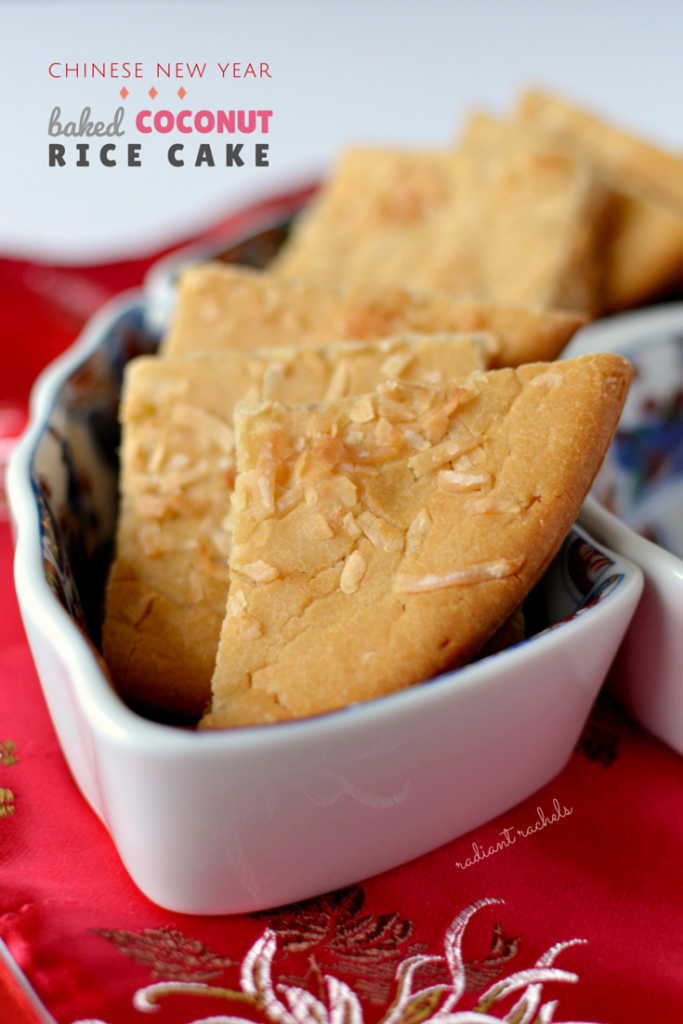
Chinese New Year is coming up this Thursday, February 19th! And like all other Chinese holidays, it involves a lot of food. Lunar new year is considered a major holiday in Asia and is a week-long celebration of decking the house in as much red and gold as possible, picking the fullest kumquat tree, ingesting enough new years food to last for the rest of the year, and hopping around to relatives’ house to wish them my default three wishes and gather red pockets.
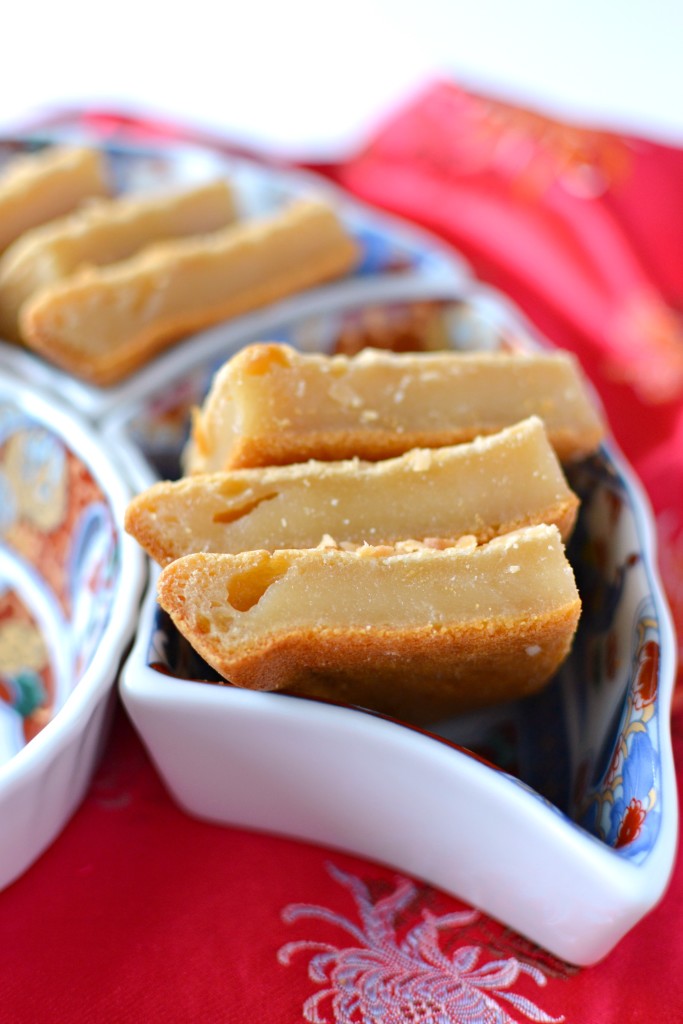 Growing up in a multicultural city, i.e. Vancouver, people would often greet each other with “gung hay fat choy” in the spirit of the lunar new year. I always blow people’s minds when I tell them that that phrase does not mean ‘happy new year’. So here is today’s fun fact: gung hay fat choy essentially means ‘I hope you earn a lot of money this year’. As you can see, it isn’t a universally suitable greeting; as I kid, I found it amusing to reply with “I don’t have a job”. To wish someone a happy new year, say sun leen fai lok! That is one of my three default wishes. The other two are ‘I wish you good health’ and ‘I wish you the alertness of a dragon and horse’. Haha! I crack myself up with my direct translations. That last one is usually said to elderly folks and it also relates to good health.
Growing up in a multicultural city, i.e. Vancouver, people would often greet each other with “gung hay fat choy” in the spirit of the lunar new year. I always blow people’s minds when I tell them that that phrase does not mean ‘happy new year’. So here is today’s fun fact: gung hay fat choy essentially means ‘I hope you earn a lot of money this year’. As you can see, it isn’t a universally suitable greeting; as I kid, I found it amusing to reply with “I don’t have a job”. To wish someone a happy new year, say sun leen fai lok! That is one of my three default wishes. The other two are ‘I wish you good health’ and ‘I wish you the alertness of a dragon and horse’. Haha! I crack myself up with my direct translations. That last one is usually said to elderly folks and it also relates to good health.
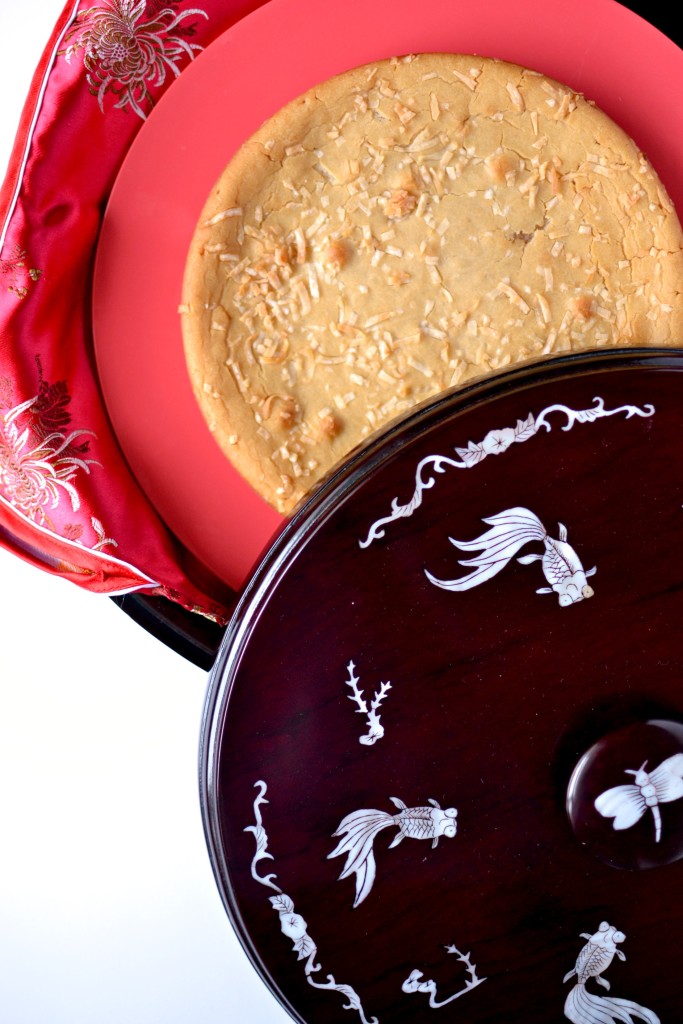
Back to the food, all the glorious food! At potlucks, you’ll likely find a round snack platter of squash seeds and candied wintermelon, lotus root, and lotus seed. Sounds like a funky mix but they are all puns for good luck. The box I used above is my family’s “snack platter” box. The food I look forward to most is my grandma’s new year’s specialities. She cooks up a storm preparing steamed cakes and extravagant dinner spreads. She makes the best steamed yellow sugar rice cake, radish cake, and taro cake.
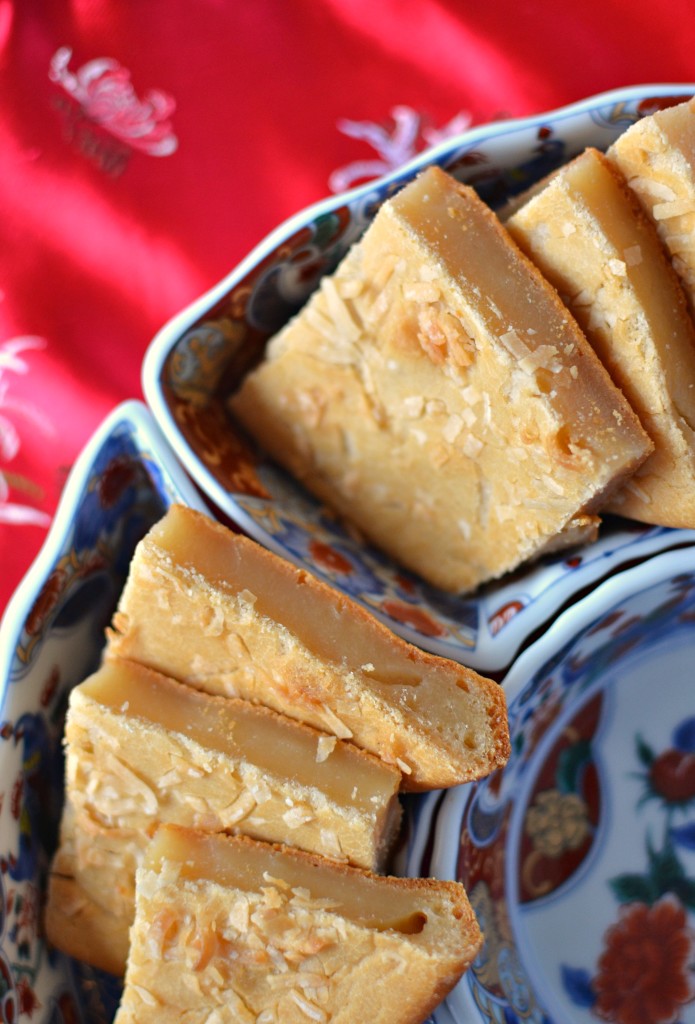
Traditional Chinese cakes are in no way similar to the fluffy frosted towers we call cake in North America. It’s really hard to describe exactly what Chinese cakes are. Sometimes it does involve wheat flour and other times it’s savoury and has the idea of a ‘crab cake’. The cake we know in English is dan gao, literally translated into ‘egg cake’. There are the savoury so-called cakes, such as the radish or taro cakes that are also served during new years. Chinese is confusing like that. Directly translated, nian gao means ‘year cake’, thus it usually only shows up during Chinese New Year. Made with glutinous rice flour (glutinous as in sticky, not wheat gluten), it’s very similar to Japanese mochi.
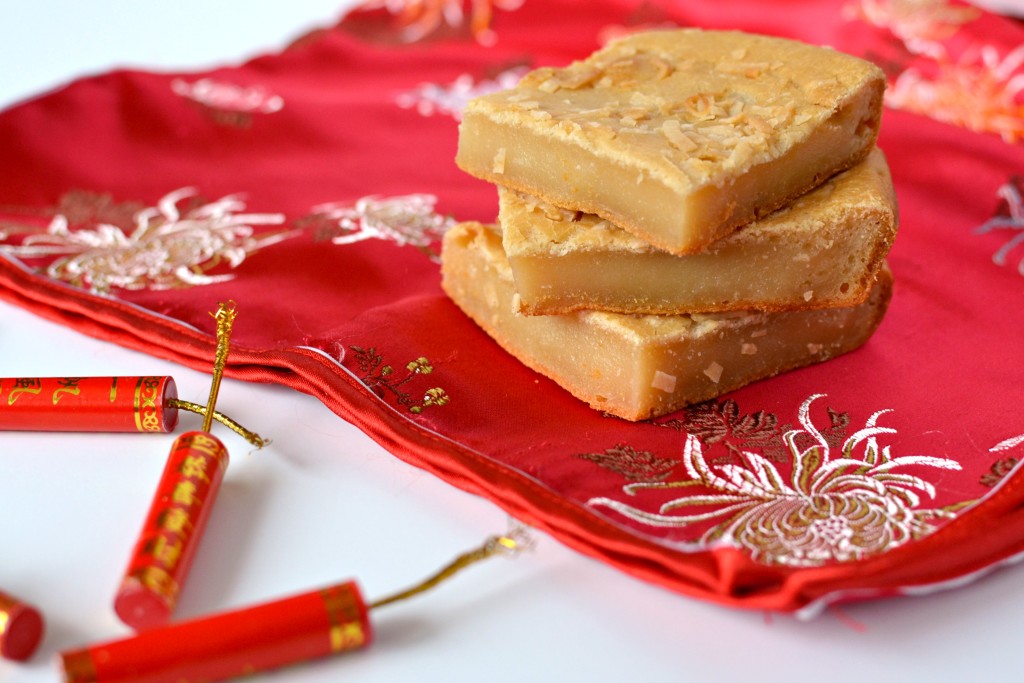
The rice cake I am sharing with you today is not the most traditional variety. The most traditional nian gao would be the steamed yellow sugar one my grandma makes. That one is steamed until solid, cooled before cutting into slices, dipped into beaten egg, and panfried until golden brown on the outside and soft on the inside. My Baked Coconut Rice Cake is, you could say, a more modern twist on the classic and requires much less work. I know it is still a popular dessert served at new year’s because I grew up eating it yearly at our church’s potlucks. An auntie would make a big ol’ pan of baked rice cake and I’d visit the kitchen counter more often than I should’ve to help myself to a few more squares.
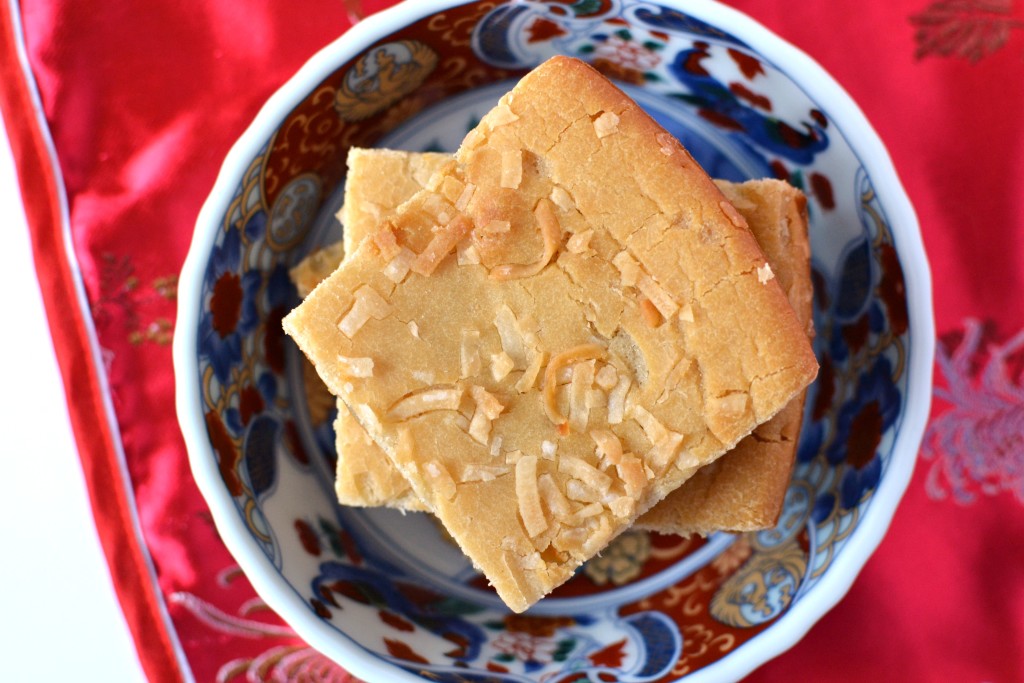
This recipe is one of my favourite foods in the world and I’m happy to report I’ve perfected the recipe over the course of about three years, recently vegan-izing it too! What defines perfect? Minimal and unrefined sugar, bold coconut flavour, and minimal oil. And unless you happen to be allergic to coconut (in which I pity you dearly), this eggless, dairy-free, gluten free, and vegan recipe is free of common allergens too. Crunchy on the outside and extraordinarily chewy and soft on the inside, this healthy Chinese New Year’s dessert is one of my all-original creations!
Here is what the batter should look like at its “ribbon consistency”
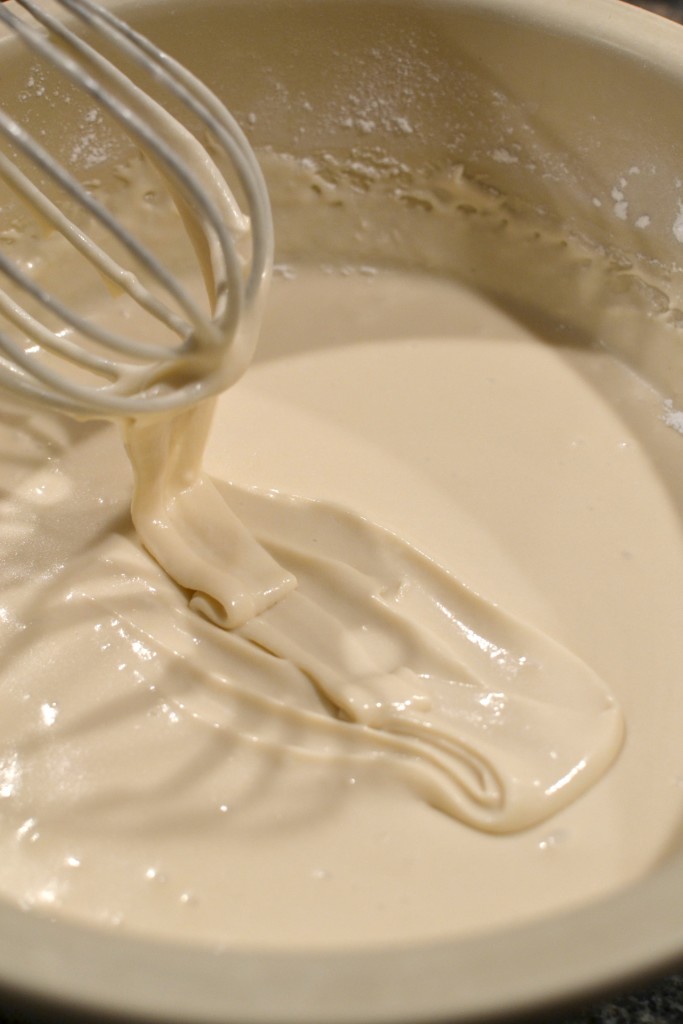
- 1 (400g) bag glutinous rice flour*
- 2 tsp baking powder
- A pinch of sea salt
- 1 (400mL) can coconut milk
- ⅔ cup maple syrup or honey*
- ⅓ cup coconut oil, melted
- Red bean paste, lotus seed paste, black sesame paste etc., for filling (optional)
- Large shredded coconut flakes, for topping (optional)
- Preheat oven to 350˚F. Grease two 8 inch cake pans with non-stick coconut oil spray.
- In a large bowl, whisk together glutinous rice flour, baking powder, and sea salt.
- In a separate bowl, whisk together coconut milk, maple syrup, and melted coconut oil.
- Add wet ingredients into dry ingredients and mix until combined. The batter's consistency is perfect when it flows off a whisk or spatula in ribbons.
- If using a filling, pour ¼ of batter into the bottom of each prepared pan. Spread evenly. If using filling, dot over batter. Pour ¼ more batter on top of filling and spread evenly. If not using any filling, distribute batter evenly between the two prepared pans. Sprinkle coconut flakes on top.
- Bake for 45 to 50 minutes, until golden brown.
- Cool in pans for a few minutes before turning out onto plate. It should fall out very easily. Use kitchen scissors for clean cuts.
**Honey is not suitable for strict vegans


I hope I can try these delicious-looking rice cakes soon! Happy New Year!
Happy New Year to you too Julia!
It’s my first Chinese New Year as a vegan and I just made this cake last night. It turned out amazing. Crispy on the outside and chewy on the inside. I would add just a bit more maple syrup to sweeten it a little more next time. So good when it’s still warm!
So glad you chose to make our recipe to celebrate Chinese New Year! Like you, I always eat a piece right out of the pan because fresh, warm baked goods are always the best.
Thank you for sharing this! So helpful for people who are vegan to be able to enjoy this as well. This was one of my favorite rice cakes growing up and it still is :). I included a link to your recipe in my recent post on CNY treats. Here it is in case you want to check it out: https://spotofsunshine.com/printables-activities/chinese-new-year-kids-activity-coconut-rice-cake/